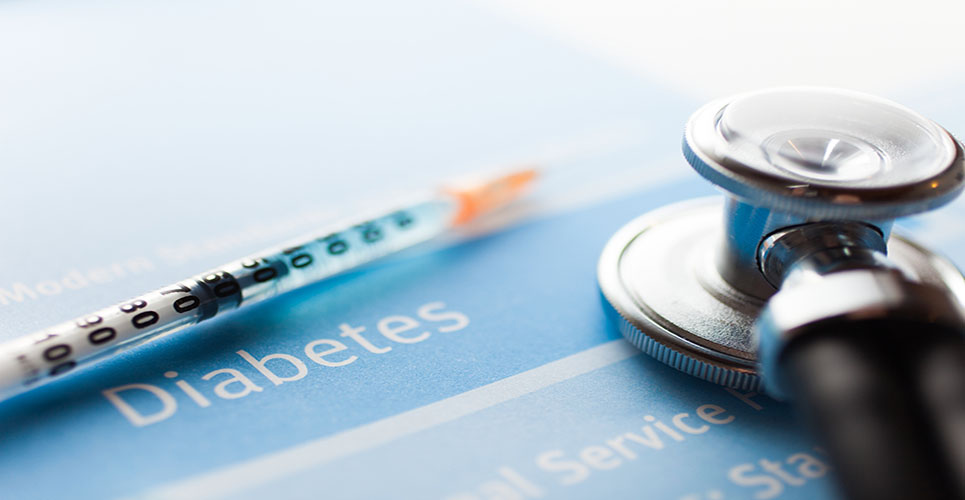Boehringer Ingelheim and Eli Lilly and Company presented results from a 52-week Phase III study that demonstrated sustained efficacy of the investigational empagliflozin/linagliptin combination tablet in adults with Type 2 Diabetes (T2D) already taking metformin and in those who were previously untreated.
Results from the study, presented during the 50th Annual Meeting of the European Association for the Study of Diabetes (EASD), also confirmed the safety profile of the combination tablet.
Boehringer Ingelheim and Eli Lilly and Company presented results from a 52-week Phase III study that demonstrated sustained efficacy of the investigational empagliflozin/linagliptin combination tablet in adults with Type 2 Diabetes (T2D) already taking metformin and in those who were previously untreated.
Results from the study, presented during the 50th Annual Meeting of the European Association for the Study of Diabetes (EASD), also confirmed the safety profile of the combination tablet.
“We are encouraged by the results of this study because it showed clinically meaningful reductions in blood glucose levels with the empagliflozin/linagliptin combination when used with or without metformin,” said Prof Hans-J. Woerle, Vice President, Head of Medicine, Therapeutic Area Metabolism, Boehringer Ingelheim. “As Type 2 Diabetes is a complex and progressive condition, new treatment approaches may be required to help control blood glucose and the single tablet combination of empagliflozin/linagliptin may provide an important option for these patients.”
About the study
In the parallel group study, 1,363 adults with T2D were randomised to five groups to investigate the efficacy and safety of two doses of the empagliflozin/linagliptin combination tablet compared to two doses of empagliflozin and one dose of linagliptin with or without metformin. Overall, empagliflozin/linagliptin combination therapy was well tolerated, with safety profiles similar to those known for the individual components. Patients were randomised to one the following treatments:
Empagliflozin 25mg/linagliptin 5mg, combination tablet
Empagliflozin 10mg/linagliptin 5mg, combination tablet
Empagliflozin 25mg
Empagliflozin 10mg
Linagliptin 5mg
Empagliflozin/linagliptin combination therapy as add-on to stable dose metformin
At 52 weeks, both empagliflozin 25mg/linagliptin 5mg and empagliflozin 10mg/linagliptin 5mg led to significant reductions in blood glucose (HbA1c) of -1.21 and -1.04 percent, respectively, compared to baseline. The glucose lowering effects of the other treatments were as follows: linagliptin 5mg (-0.45 percent), empagliflozin 25mg (-0.69 percent) and empagliflozin 10mg (-0.70 percent).
Confirmed hypoglycaemic adverse events (AEs) were reported in 3.6 percent, 2.2 percent, 3.5 percent, 1.4 percent and 2.3 percent of subjects on empagliflozin 25mg/linagliptin 5mg, empagliflozin 10mg/linagliptin 5mg, empagliflozin 25 mg, empagliflozin 10mg and linagliptin 5mg respectively; no subject required assistance.
Genital infection was reported in 2.2 percent, 5.9 percent, 8.5 percent, 7.9 percent and 2.3 percent, on the same regimens respectively. Urinary tract infections were reported in 10.2 percent, 9.6 percent, 13.5 percent, 11.4 percent and 15.2 percent, on the same regimens respectively.
Empagliflozin/linagliptin combination therapy in previously untreated adults with T2D
At 52 weeks, both empagliflozin 25mg/linagliptin 5mg and empagliflozin 10mg/linagliptin 5mg led to reductions in blood glucose (HbA1c) compared to baseline of -1.18 and -1.25 percent, respectively, as did linagliptin 5mg (-0.51 percent), empagliflozin 25mg (-1.02 percent) and empagliflozin 10mg (-0.87 percent).
The reduction in blood glucose for empagliflozin 10mg/linagliptin 5mg combination tablet was statistically significant compared with empagliflozin 10mg or linagliptin 5mg; however, reductions seen with empagliflozin 25mg/linagliptin 5mg did not reach statistical significance compared with empagliflozin 25mg.
Confirmed hypoglycaemic AEs were reported in 1 patient each in both the empagliflozin 25mg and linagliptin 5mg groups and 4 patients on empagliflozin 10mg; no subject required assistance.
Genital infection was reported in 5.9 percent, 2.9 percent, 4.4 percent, 5.2 percent and 3.0 percent in empagliflozin 25mg/linagliptin 5mg, empagliflozin 10mg/linagliptin 5mg, empagliflozin 25mg, empagliflozin 10mg and linagliptin 5mg. Urinary tract infections were reported in 12.5 percent, 15.4 percent, 10.4 percent, 16.3 percent and 10.4 percent, on the same regimens respectively.
Boehringer Ingelheim Pharmaceuticals, Inc. and Lilly announced the U.S. Food and Drug Administration (FDA) accepted the filing of the New Drug Application for the investigational oral combination of empagliflozin/linagliptin in a single tablet for the treatment of T2D. If granted approval by the FDA, this combination will bring together, for the first time into one tablet, the distinct mechanisms of action of a sodium glucose co-transporter-2 (SGLT2) inhibitor and a dipeptidyl peptidase-4 (DPP-4) inhibitor.

